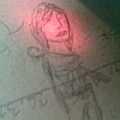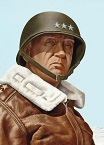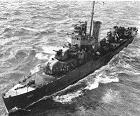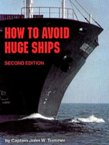BBfanboy
Posts: 18046
Joined: 8/4/2010
From: Winnipeg, MB
Status: offline

|
quote:
ORIGINAL: Ian R
quote:
ORIGINAL: Zorch
Someone will probably correct me on this, but I thought the R class BBs used turbines from launch; it's just that they were coal-fired in most boilers.
I had a look at that in Conways. The "Revenge" class (as described in the Admiralty papers for the 1913 building programme) were designed as cheaper versions of the 'cutting edge' QEs.
The original design, when the first three keels were laid in 1913, and the 4th and 5th in 1914, was 'multi-fuel' with both coal and oil, and 4 shaft Parson's turbines, for 21.5kts.
Renee Greger in his book (page 87) says the lower speed, compared to the QEs, was acceptable because the ships were specifically designed for North Sea duty, and the German High Seas Fleet was limited to not more than 21kts anyway.
RN concerns about fuel oil supplies where alleviated when Sir Winston Churchill arranged for the strategic purchase of shares in the Anglo-Iranian oil company, and in January 1915 the design was altered (even though two had been launched) to pure oil firing, with a consequent increase from 31,000 to 40,000 SHP, and speed increased to 23 knots (not that they ever achieved that) - I.E. making them a more austere version of the "second generation" QE fast battleship. For example, they only had one rudder (plus a smaller hand operated rudder centreline ahead of it, which proved useless and was later removed).
This in one sense compares favourably with the QEs, whose turbines produced 56,000 SHP on a similar displacement, and also rated at 23kts. However, the power limitations, and other aspects of "accepting the lowest bidder" procurement, made them less amenable to later modernisation. Also, on trials with torpedo protection bulges added, the speed dropped by 0.5kts, albeit they became more stable gun platforms.
In August 1914 the 6th and 7th units were suspended and later re-ordered as the BCs Renown and Repulse, and the 8th unit (Resistance) was canned.
Only one of the five ships received an extensive rebuild in the 1930s - the Royal Oak, which was ironically sunk at anchor by a U-boat. The other four were retired to reserve during the war after performing useful convoy escort and bombardment duties.
Winston Churchill, writing after 1945, said the Admiralty spent most of the war keeping the R class BBs "as far away from the enemy as possible".
Thanks for the detailed info on their design history. I am puzzled by the statement about the sixth and seventh units becoming BCs Repulse and Renown (AKA Repair and Refit). The BCs had a much longer hull to accommodate their additional boilers/machinery for higher speed. Does that mean just the money for construction was diverted, or had the R class 6th and 7th keels already laid down?
_____________________________
No matter how bad a situation is, you can always make it worse. - Chris Hadfield : An Astronaut's Guide To Life On Earth
|
 Printable Version
Printable Version













 New Messages
New Messages No New Messages
No New Messages Hot Topic w/ New Messages
Hot Topic w/ New Messages Hot Topic w/o New Messages
Hot Topic w/o New Messages Locked w/ New Messages
Locked w/ New Messages Locked w/o New Messages
Locked w/o New Messages Post New Thread
Post New Thread